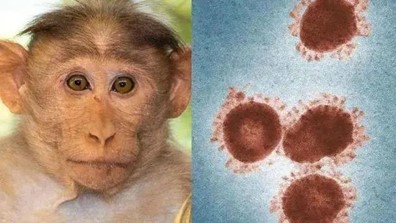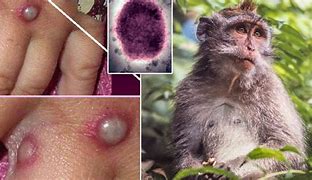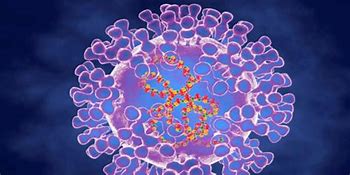Since May this year, the monkeypox epidemic has emerged in many countries in Europe and the United States and spread to the world.

On July 23, the World Health Organization (WHO) declared that the monkeypox outbreak in several countries and regions constituted a "public health emergency of international concern" (PHEIC).
This is the highest level of alert issued by the WHO. This means that the WHO now sees the monkeypox outbreak as a major threat to human health globally, requiring a coordinated international response to prevent the virus from spreading further and escalating into a pandemic.
PART 01
What is PHEIC?
PHEIC refers to the international spread of a disease that poses a public health risk to other countries that may require a coordinated international response.
The main function of announcing PHEIC is to sound the alarm and call on the international community to provide financial, resource, medical and other support to the affected areas, to ensure the transparency of the development of the epidemic, and to allow countries to take certain temporary epidemic prevention measures for the circulation of international personnel and goods.
So far, WHO has declared seven PHEICs:
H1N1 influenza epidemic(2009);
polio outbreak(2014);
Ebola outbreak in West Africa(2014);
Zika virus outbreak (2015-2016);
Ebola outbreak in Congo(2018-2019);
COVID-19 outbreak(2020);
And the monkeypox outbreak announced on July 23.
PART 02
The situation of monkeypox epidemic is severe
According to the WHO, more than 16,000 monkeypox cases have been reported in 75 countries so far this year, the number of confirmed infections has increased by 77% from the end of June to the beginning of July, and five deaths have been reported in Africa this year, There have been no deaths outside Africa. (Source: WHO official website)
However, the epicenter of this monkeypox outbreak is Europe, which will account for more than 80% of the world's confirmed infections in 2022.
PART 03
WHO issues four types of epidemic prevention recommendations

WHO has divided into four categories according to the conditions of each country, focusing on different focuses in fighting monkeypox outbreaks:
Category 1: Countries with no history of monkeypox or no new cases in the past 21 days
WHO recommends that governments in these countries establish or activate coordination mechanisms between health and other sectors to prevent human-to-human transmission. Tedros also asked the government to try not to stigmatize the virus so that infected people would be reluctant to report their illness.
In addition, the WHO asked these countries to increase their testing capacity. Since monkeypox virus is likely to be primarily sexually transmitted, governments need to work with civil society networks and focus their efforts on settings and settings with high levels of intimate contact.
Category 2: Countries with imported monkeypox cases in the population
WHO recommends that governments in these countries establish or activate coordination mechanisms between health and other sectors to prevent human-to-human transmission. Tedros also asked the government to try not to stigmatize the virus so that infected people would be reluctant to report their illness.
In addition, the WHO asked these countries to increase their testing capacity. Since monkeypox virus is likely to be primarily sexually transmitted, governments need to work with civil society networks and focus their efforts on settings and settings with high levels of intimate contact.
Category 3: Countries with zoonotic transmission
WHO recommends that authorities establish or activate collaborative mechanisms at national and local levels to understand, detect, and manage the risk of animal-to-human transmission. The WHO also recommended that local governments conduct detailed case studies and studies to understand the transmission patterns of monkeypox virus.
Category 4: Countries with medical resource manufacturing capabilities
WHO recommends that countries in a position to do so increase production and supply of monkeypox tests, vaccines or medicines, and work with WHO to allocate these resources to maximally stop the virus from spreading globally.
PART 04
Rapid identification of monkeypox virus

In the face of the unusual monkeypox epidemic, accurate detection is the cornerstone of early identification of cases, rapid differential diagnosis, effective treatment, and curbing the spread of the virus. Based on the epidemiological characteristics of the virus and the monitoring needs, the diagnosis of monkeypox virus infection is more suitable for the amplification of viral nucleic acid molecules, that is, the specific and rapid detection of monkeypox virus DNA by polymerase chain reaction (PCR). Diagnostic specimens were obtained from oropharyngeal swabs, whole blood, vesicle fluid, pustule fluid, etc. Rapid and specific early screening and diagnosis of poxviruses can be made in a short period of time.
Relying on Hecin's international leading diagnostic technology platform, Hecin responded quickly to the monkeypox virus outbreak and launched a Monkeypox Virus Nucleic Acid Test Kit (PCR- fluorescence probe method).This product can quickly identify monkeypox virus by specifically detecting the nucleic acid fragment of monkeypox virus.
The reagent has the characteristics of high sensitivity and simple operation, is suitable for rapid diagnosis of related diseases caused by monkeypox virus infection, and is compatible with fluorescent PCR platform. The reagent is made into a freeze-dried powder reagent, which has strong stability and can be transported and stored at room temperature, eliminating the trouble of low-temperature cold chain transportation and storage. The operation is simple and convenient, the operator does not need complicated manual packaging operations, and the processed samples can be directly added for detection.





